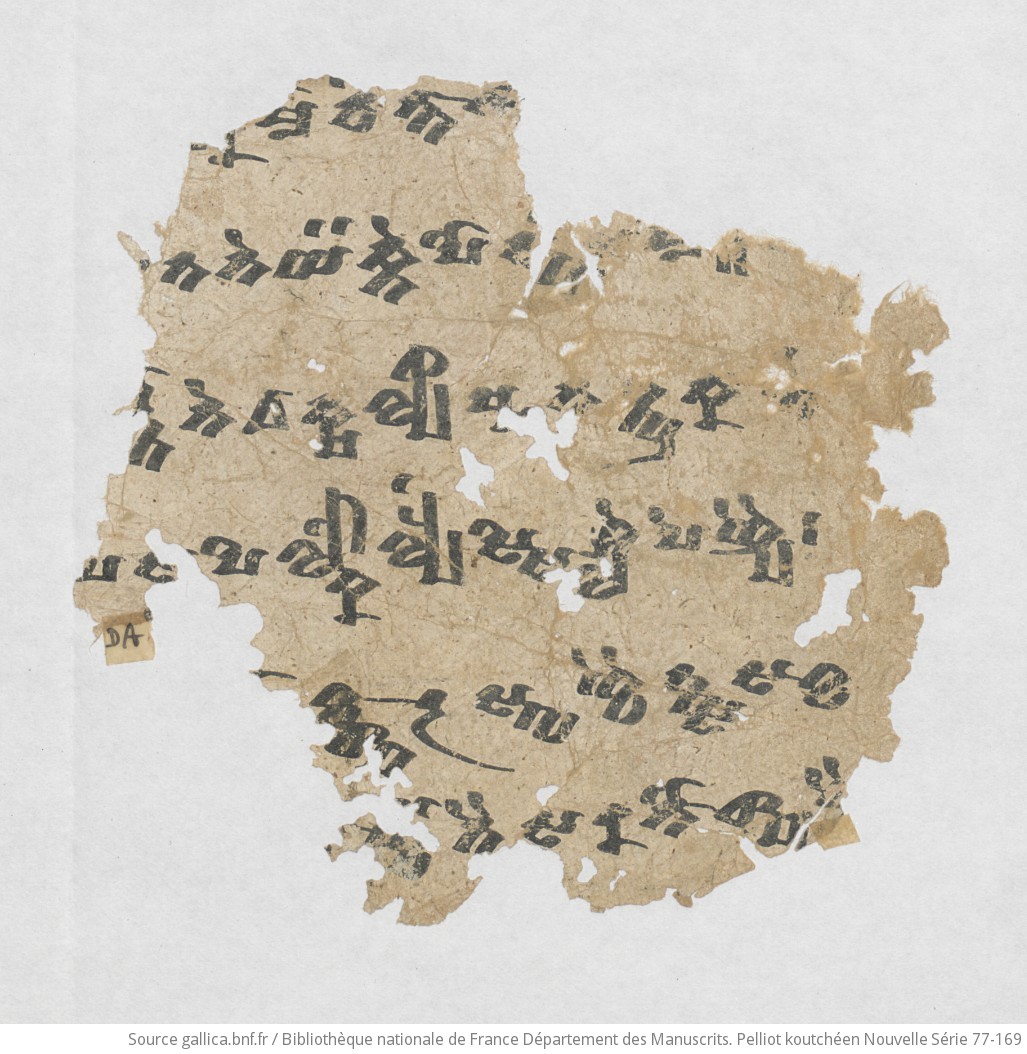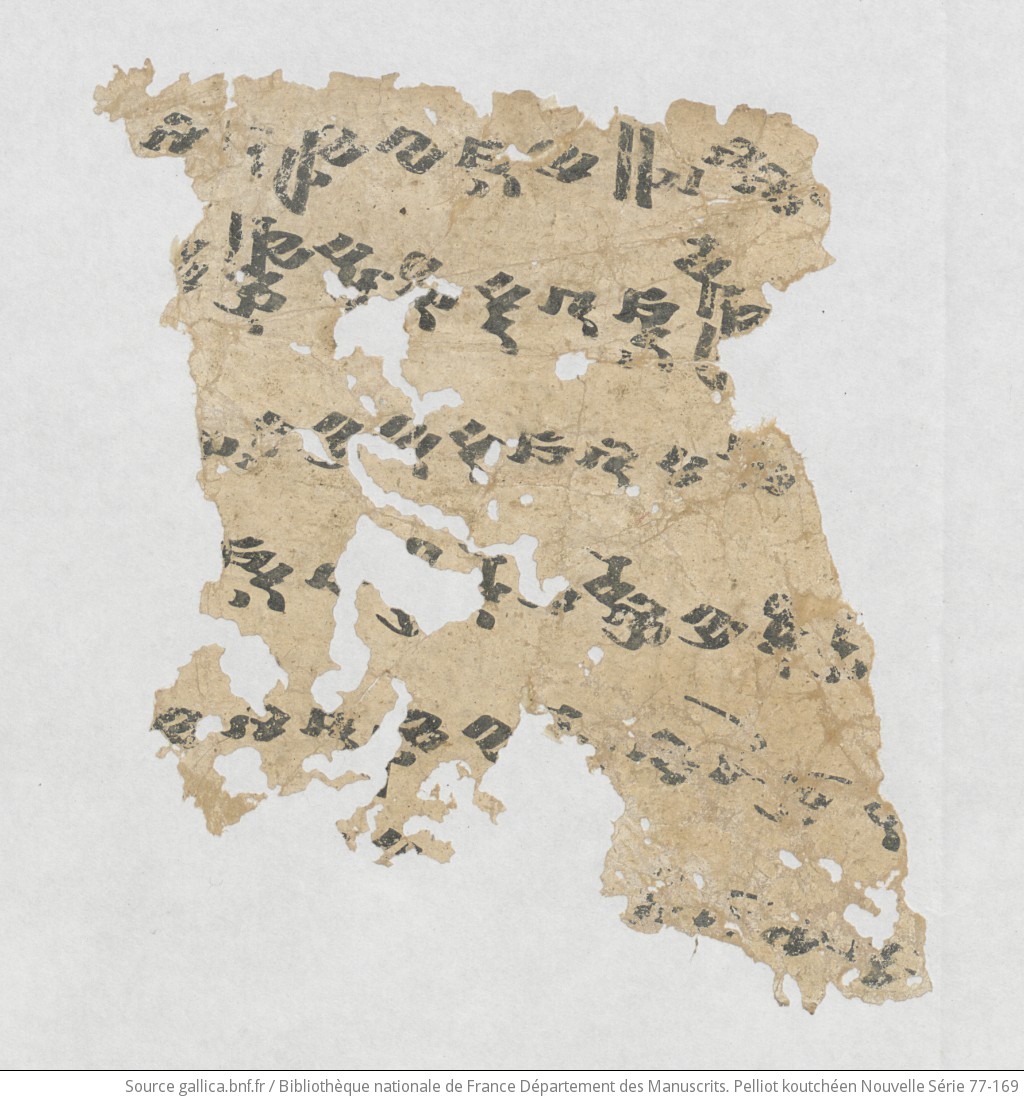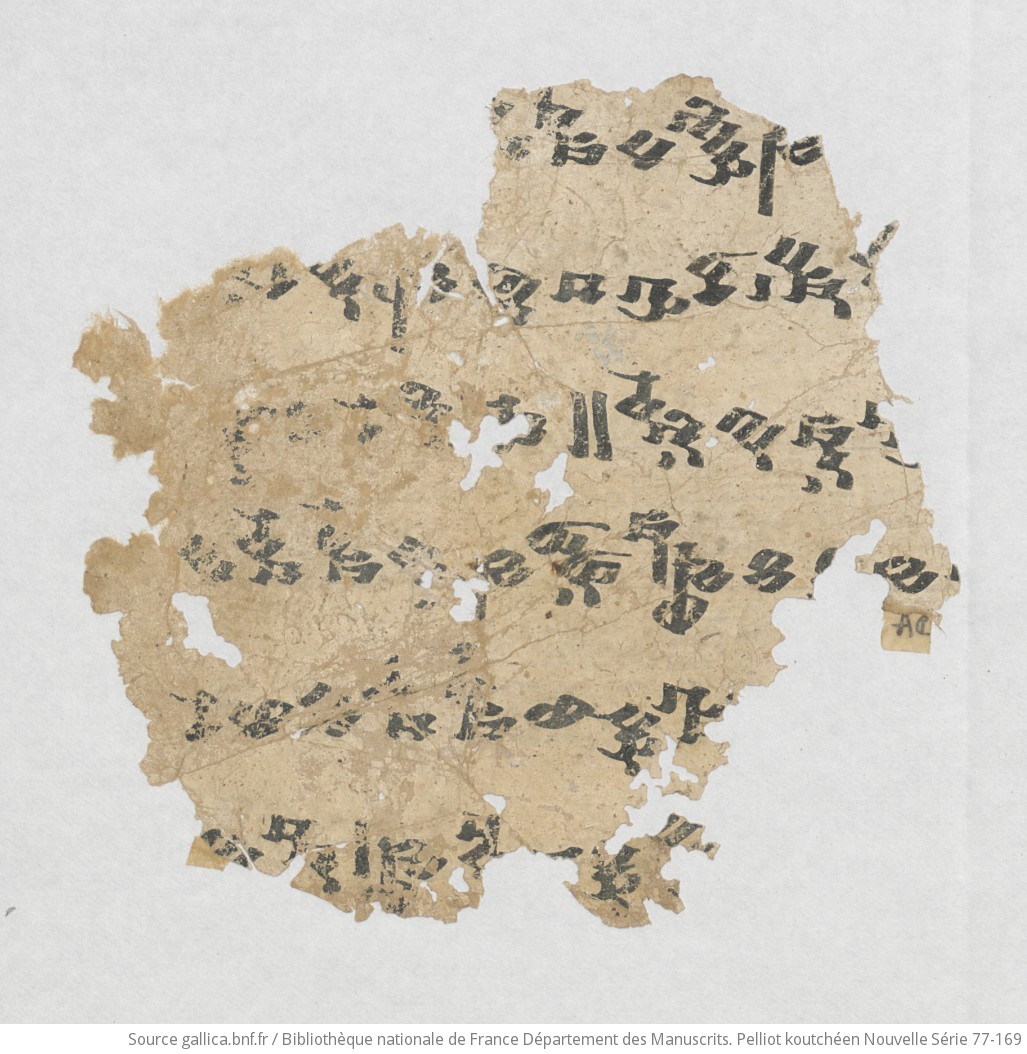Work in progress
PK NS 79.1
| Known as: | PK NS 79.1; Pelliot Koutchéen Nouvelle Série 79.1; PK NS 79.2 |
|---|
| Cite this page as: | Georges-Jean Pinault; Melanie Malzahn (collaborator); Michaël Peyrot (collaborator). "PK NS 79.1". In A Comprehensive Edition of Tocharian Manuscripts (CEToM). Created and maintained by Melanie Malzahn, Martin Braun, Hannes A. Fellner, and Bernhard Koller. https://cetom.univie.ac.at/?m-pkns791 (accessed 30 Jun. 2025). |
|---|
Edition |
| Editor: | Georges-Jean Pinault; Melanie Malzahn (collaborator); Michaël Peyrot (collaborator) |
|---|
| Date of online publication: | 2015-05-26 |
|---|
Provenience |
| Main find spot: | Duldur-akur |
|---|
| Expedition code: | DA cour |
|---|
| Collection: | Bibliothèque nationale de France, fonds Pelliot Koutchéen (Paris) |
|---|
Language and Script |
| Language: | TB |
|---|
| Linguistic stage: | classical |
|---|
| Script: | classical |
|---|
Text contents |
| Title of the work: | Supriyanāṭaka |
|---|
| Text genre: | Literary |
|---|
| Text subgenre: | Drama |
|---|
| Verse/Prose: | prose; verse |
|---|
Object |
| Material: |
ink
on paper |
|---|
| Form: | Poṭhī |
|---|
| Size (h × w): | 26 × 14.4 cm |
|---|
| Number of lines: | 6 |
|---|
| Interline spacing: | 2-2.3 cm |
|---|
Images
Transliteration
| a1 | /// ñä ṣṣā me || tu meṃ mcu ṣka nta a m[ā] c[ä] nta¯ ¯s̝(·) /// |
|---|
| a2 | /// || wa lo we s̝s̝aṃ p[l]a ma s[o] [•] ta ne yä kne po staṃ – m(·) || |
|---|
| a3 | /// [d](·) [v]a pu ṣpa ga ddhā [r]ā yaṃ wa [rt]to ne e kṣa lyi ṣ[ṣ]a na [k]wra k[ā] – |
|---|
| a4 | /// [n](·) y[ai] ne || pra [ṇā] [de](·) [t]s(·) ye [r]pe s[a] pi lko lyeṃ ssi śle pe ñyai : |
|---|
| a5 | /// – ñe – nne [k]· (·)e wā ya lle : lu (–) (·)[ā] ks̝ta¯ ¯r swa ñcai ntsa sa¯ ¯k |
|---|
| a6 | /// – ·[e] – – (– – –) (·)ī (–) – (– – –) ¯ñcä tai sa ra no¯ ¯s̝p ·ai |
|---|
| b1 | /// rpa¯ ¯s̝ [p]r(·) – (– – –) (·)n(·) (– – – – –) ·[to] cau [e] kṣ(·) lyi ṣṣe [w](·) |
|---|
| b2 | /// [w]e ño¯ ¯r tsa [ṅ]k(·) w(·) lo ṣe sa [l](·) (– – –) [m]p(·) nau¯ ¯s̝ mcu ṣ[k]a nta bha ra |
|---|
| b3 | /// ro cce wā sko sa [k]e(·) (·)[c]ī y(·) nmeṃ la [cä] ka lymi ññeṃ l[ā] ntaṃ mcu ṣka nta |
|---|
| b4 | /// m[p]a ta se ma n[e] we wī nä [ṣṣ]o rmeṃ we skeṃ || a(·) tsa ra [da] r[śa]ṃ |
|---|
| b5 | /// lyko rmeṃ pe rne ñce śn(·) klyau t[k]a mte : u po ṣa thi lā nte [r]a¯ ¯(·)• |
|---|
| b6 | /// – ssi • 1 || tu meṃ wa lo [ṣ]e sa la ntso na mc[u] ṣ[k]a (– – –) |
|---|
Transcription
Translation
| a1 | ... (s)he required from us." Thereupon the princes and ministers ... |
|---|
| a2 | ... The king says: "Sit down you (pl.)!" Then according to custom he sat down. |
|---|
| a3 | ... in the forest of Devapuṣpagandhārāyaṃ ('having the perfume of divine flowers'), (from) the festive roof terraces ... |
|---|
| a4 | ... In [the tune] c.: To (reflect??) a gaze on the image of Praṇāda with splendor. [1a] |
|---|
| a5 | ... whence ... should be lead. The brillance differs because of the rays, happiness ... |
|---|
| a6 | ... and also thus ... |
|---|
| b1 | ... this festive ... |
|---|
| b2 | ... the speech arose. The king together with the queens [and then] at first the princes Bhara° ... |
|---|
| b3 | ... went out of the palace in great procession. The kings of the directions, the princes ... |
|---|
| b4 | ... after having revered ... comparable to ... they say: (In) [the tune] a.: |
|---|
| b5 | "... after having seen ... we have been turned into two glorious eyes. Like (the jewels) of the [Naga] king Upoṣatha ... |
|---|
| b6 | ... to ... 1. Thereupon the king together with the queens [and] the prince(s) .. |
|---|
Commentary
Remarks
| * | Fragments PK NS 79.1 (middle of the leaf) and PK NS 79.2 (right part with the right margin partly preserved) belong to one single leaf and make a complete joint in lines a1-a4; both fragments are therefore edited here together. |
|---|
Philological commentary
| * | The tune has a meter of 4 x 14 (7/7) syllables. It is unclear where the metrical part ends. |
|---|
| n1 | One cannot restore a 3.pl. lyamāre at the end of the line since there is no space before the double daṇḍa. |
|---|
| n3 | devapuṣpagaddhārāyaṃ clearly consists of Skt. deva-puṣpa-gandha- 'having the perfume of divine lowers' and then either dhārayāṇa- 'containing' with haplology or maybe a wrongly Sanskritized Prakrit form of araṇya- 'forest'. |
|---|
| n5 | -rpaṣ is the end of an obl.sg. or nom.pl. participle either from the root wārpā- 'to surround' or kārpā- 'to descend'; both seem possible here from a semantic point of view. |
|---|
| n6 | bhara- is the beginning of a proper name. |
|---|
| n7 | The tune has a meter of 4 x 14 (7/7) syllables. |
|---|
Linguistic commentary
| n2 | The plural of the alternant kwrakār is so far unattested, but kwrakā(ränma) would be the unmarked form. |
|---|
| n4 | lyeṃssi is an infinitive made from a class II subjunctive stem of a root lyeṃs- or from a (nā)sk-subjunctive stem of a root lye(ṃ)-. The root is otherwise unattested, so it ought to have a very specialized meaning such as 'to reflect, mirror' vel sim. |
|---|






